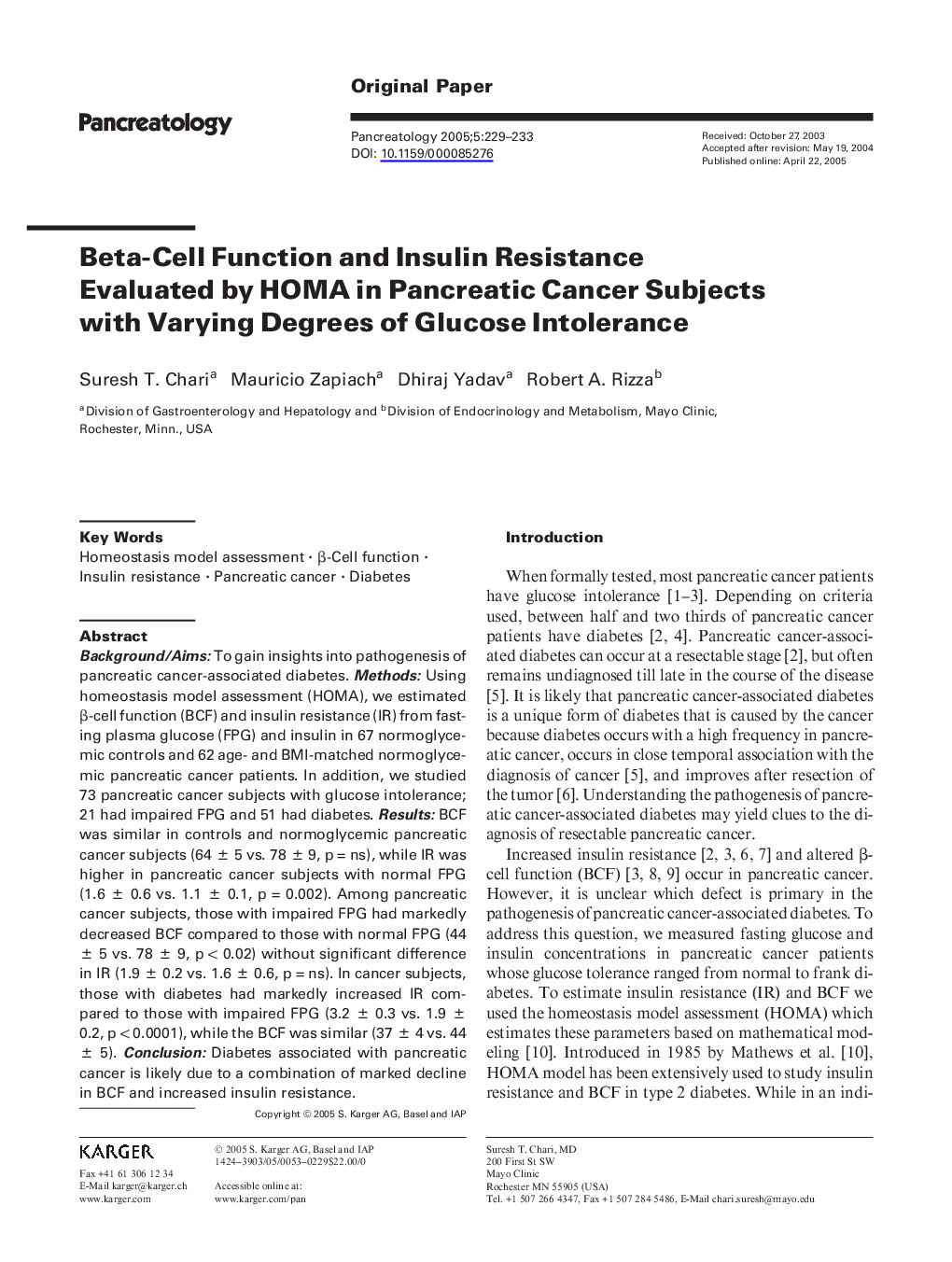| Article ID | Journal | Published Year | Pages | File Type |
|---|---|---|---|---|
| 9256196 | Pancreatology | 2005 | 5 Pages |
Abstract
Background/Aims: To gain insights into pathogenesis of pancreatic cancer-associated diabetes. Methods: Using homeostasis model assessment (HOMA), we estimated β-cell function (BCF) and insulin resistance (IR) from fasting plasma glucose (FPG) and insulin in 67 normoglycemic controls and 62 age- and BMI-matched normoglycemic pancreatic cancer patients. In addition, we studied 73 pancreatic cancer subjects with glucose intolerance; 21 had impaired FPG and 51 had diabetes. Results: BCF was similar in controls and normoglycemic pancreatic cancer subjects (64 ± 5 vs. 78 ± 9, p = ns), while IR was higher in pancreatic cancer subjects with normal FPG (1.6 ± 0.6 vs. 1.1 ± 0.1, p = 0.002). Among pancreatic cancer subjects, those with impaired FPG had markedly decreased BCF compared to those with normal FPG (44 ± 5 vs. 78 ± 9, p < 0.02) without significant difference in IR (1.9 ± 0.2 vs. 1.6 ± 0.6, p = ns). In cancer subjects, those with diabetes had markedly increased IR compared to those with impaired FPG (3.2 ± 0.3 vs. 1.9 ± 0.2, p < 0.0001), while the BCF was similar (37 ± 4 vs. 44 ± 5). Conclusion: Diabetes associated with pancreatic cancer is likely due to a combination of marked decline in BCF and increased insulin resistance.
Related Topics
Health Sciences
Medicine and Dentistry
Gastroenterology
Authors
Suresh T. Chari, Mauricio Zapiach, Dhiraj Yadav, Robert A. Rizza,
